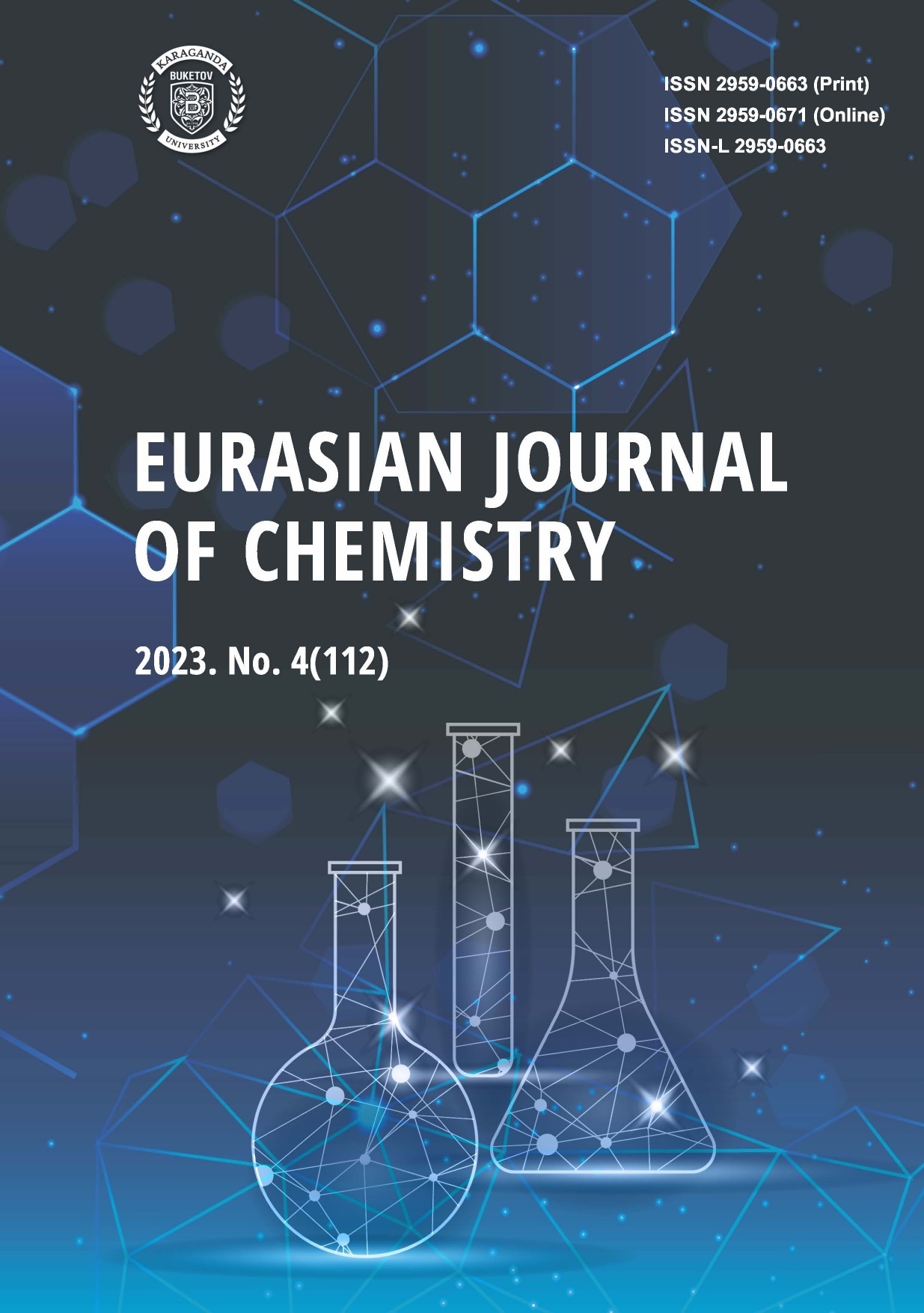Doped Proton-Conducting Membranes Based on Heat-Resistant Heterochain Polymers
DOI:
https://doi.org/10.31489/2959-0663/4-23-8Keywords:
polymer films, polymer mixtures, proton-conducting membrane, polyguanidines, olybenzimidazoles, polycationic form, orthophosphoric acid, activation energyAbstract
Fuel cells with solid polymer electrolytes are the most popular chemical current sources and versatile sources of energy today. Proton-conducting membranes based on a guanidine-containing polymer of the cationic type on a polybenzimidazole matrix were obtained in this work. The membranes were created by doping film materials with orthophosphoric acid from a polymer-polymer mixture of N-phenyl-substituted polyhexamethylene guanidine (10 %) and polybenzimidazole. In this case, phosphoric acid remains in the membrane due to hydrogen bonds with the functional groups of the polymer and electrostatic interactions resulting from the doping of polyguanidine, which transforms into a polycationic form. As the content of polyguanidine increases in the polymer-polymeric mixture, the proton conductivity of the membrane increases. It was discovered that these membranes possess high thermal stability, with only a 20% mass loss occurring at 350 °C. Additionally, they exhibit high proton conductivity of 0.3·10-1 mS/cm at temperatures of 130°C and higher, as well as satisfactory mechanical properties, with a tensile strength (σр) of 21-27 MPa and elongation at break (εр) of 7–11 %. The value of activation energy (Еа) is also low, at 0.145 eV, which suggests that these membranes have potential for using them in solid polymer electrolyte fuel cells.
Downloads
Published
How to Cite
Issue
Section
License
This work is licensed under a Creative Commons Attribution-NonCommercial-NoDerivatives 4.0 International License.
Authors retain copyright and grant the journal right of first publication with the work simultaneously licensed under a Creative Commons Attribution License (CC BY-NC-ND 4.0) that allows others to share the work with an acknowledgement of the work's authorship and initial publication in this journal.




